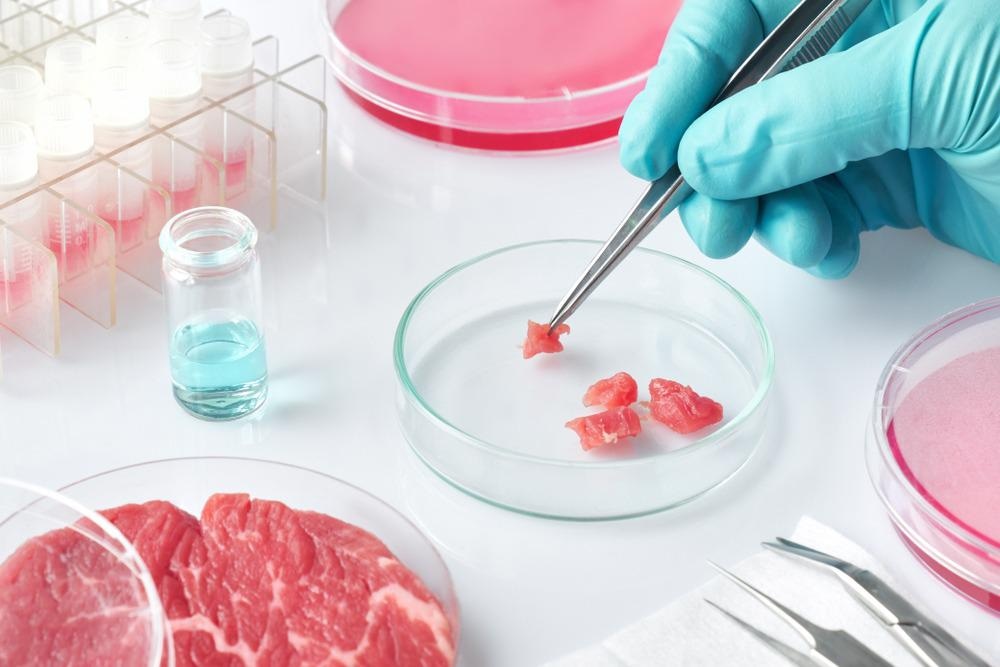Showing posts with label #lab. Show all posts
Showing posts with label #lab. Show all posts
Wednesday, November 20, 2024
Genetic Engineering in Lab-Grown Meat
Genetic engineering is playing a major role in making lab grown meat a reality, which could lead to a revolution in food production. Lab-grown meat, also known as cultured meat, involves creating animal cells in the lab instead of raising and slaughtering animals. Scientists use genetic editing tools to help these cells grow faster, form muscle tissue, and develop the right texture and taste we expect from real meat. By changing the genes of the cells, researchers can make the process more efficient and sustainable than traditional farming. For example, they can modify the cells to produce the right kind of fat and muscle so that the final product looks and tastes just like real meat, but without the environmental costs of raising livestock.
That said, there are a couple of big challenges. Production of cultured meat is fairly expensive at the moment. Even though genetic modification can speed up the process of cell replication, the technology and materials involved in it cost a great deal. Further work is needed to make the process of production inexpensive enough for the average consumer; thus, it may be quite a while before it becomes broadly available and affordable.
Then there's the question of regulation. As lab meat is genetically modified, it needs to be tested extensively to make sure it is safe for consumption. Regulatory agencies will have to ensure that such modifications do not lead to undesirable aftereffects, and a more relevant issue is how people will adapt to eating genetically engineered food. Many could feel uneasy about that, and it may take time before this engineered food item is accepted as a mainstream part of the diet.
This alternative meat source, however, is still hugely promising: it might reduce the environmental impact of traditional meat production, such as deforestation and use of water. Besides, it answers questions about animal welfare because no animals get harmed in the process. With further research and careful regulation, lab-grown meat could be an important element in how we feed the growing global population in a more sustainable and ethical way.
Monday, November 18, 2024
New DNA Storage Method Inspired By Jurassic Park
DNA is at the very heart of genetics and is the center of research and experimentation. Not all DNA can be used and analyzed right away and therefore must be stored. Researchers may simply want to store DNA so it can be used again in the future or even store it for preservation. DNA degrades over time, but that level of chemical degradation depends on various factors like type of DNA, temperature of storage, intended use, and length of time. In the most common form of storage in liquid nitrogen, DNA can last for decades. This method costs a lot for the constant need for cooling and energy consumption and upkeep of the researchers. Constant thawing and freezing can sometimes affect the life cycle of DNA but if it is kept at a relatively low temp it is no problem.
A solution for DNA storage recently came about after researchers developed a new form of storage inspired by the movie “Jurassic Park.” The researchers developed a glassy, amber-like polymer which is intended to be used in the long term storage of DNA, such as entire genomes or digital files like pictures. Unlike traditional methods of storing DNA, like using ultra-low temperatures, these polymers do not require freezing temperatures which require a large amount of energy consumption and are difficult to have in all parts of the world. The polymers can be stored at room temperature and still provide the same longevity and enhanced protection compared to its liquid nitrogen counterpart. The researchers have proven the ability to store an entire human genome, the Jurassic Park theme song encoded in DNA, and its ability to withstand 75 degrees Celsius. They are nearly complete in their process of making the polymer storage mainstream but need a method of streamlining the process of making capsules for the storage.
A solution for DNA storage recently came about after researchers developed a new form of storage inspired by the movie “Jurassic Park.” The researchers developed a glassy, amber-like polymer which is intended to be used in the long term storage of DNA, such as entire genomes or digital files like pictures. Unlike traditional methods of storing DNA, like using ultra-low temperatures, these polymers do not require freezing temperatures which require a large amount of energy consumption and are difficult to have in all parts of the world. The polymers can be stored at room temperature and still provide the same longevity and enhanced protection compared to its liquid nitrogen counterpart. The researchers have proven the ability to store an entire human genome, the Jurassic Park theme song encoded in DNA, and its ability to withstand 75 degrees Celsius. They are nearly complete in their process of making the polymer storage mainstream but need a method of streamlining the process of making capsules for the storage.
This is groundbreaking because the DNA storage method has consistently been in the use of expensive liquid nitrogen storage. As mentioned above, that storage is expensive, difficult to maintain and not possible all over the world, and also requires a careful process to ensure optimum temperatures at all times. The new process could be great in the research field and especially in places where traditional storage methods are difficult to implement and maintain. The amount of research worldwide could skyrocket if more laboratories have access to efficient storage.
Links:
Subscribe to:
Posts (Atom)

